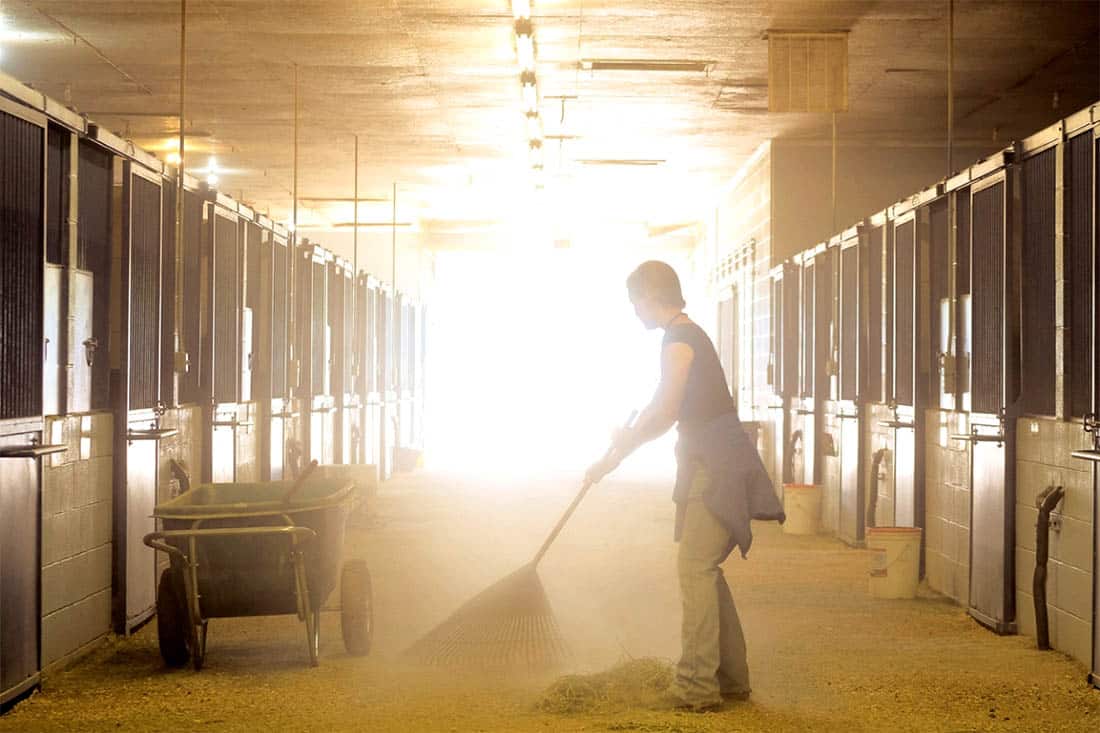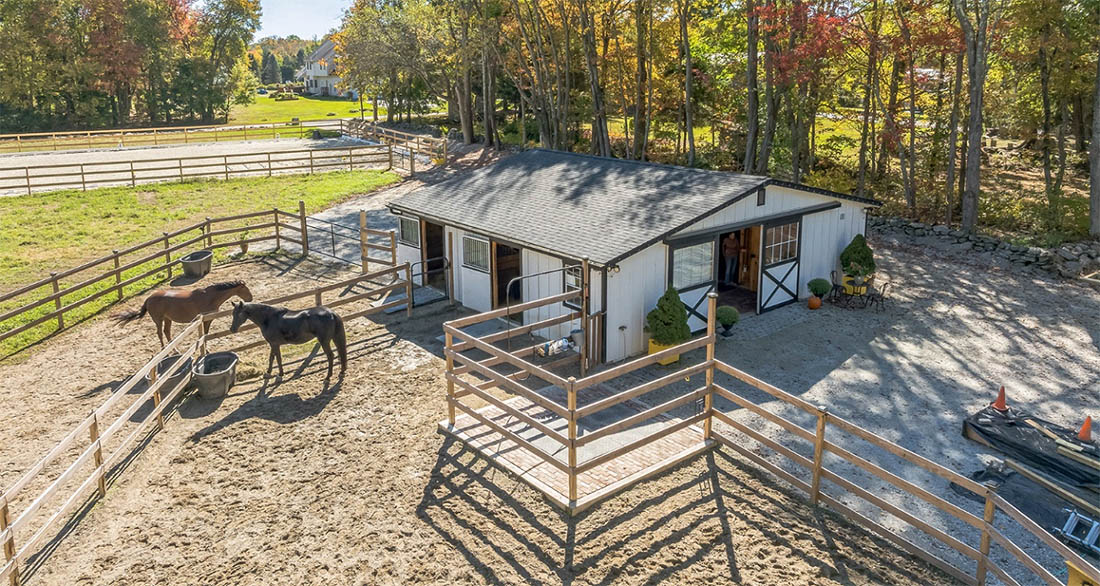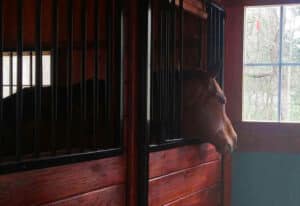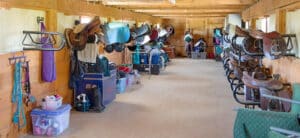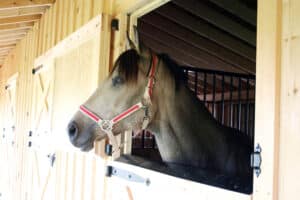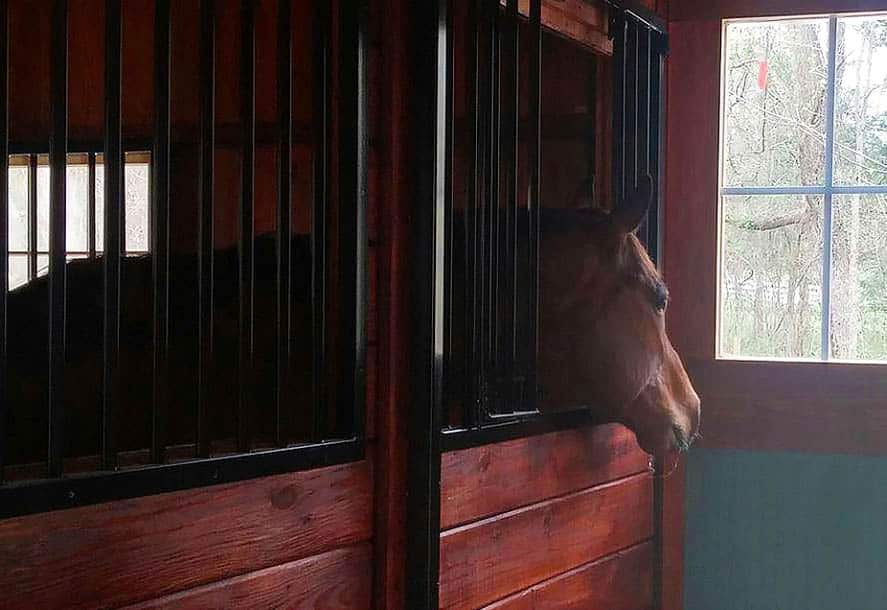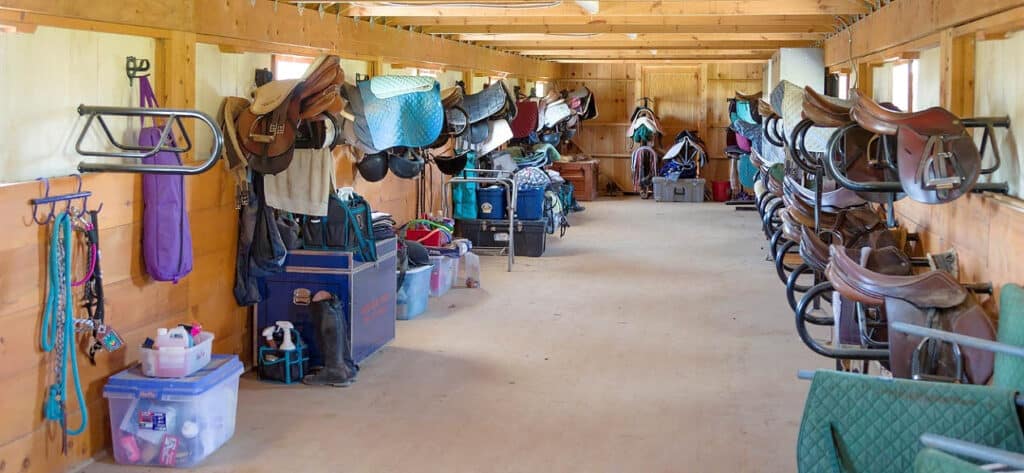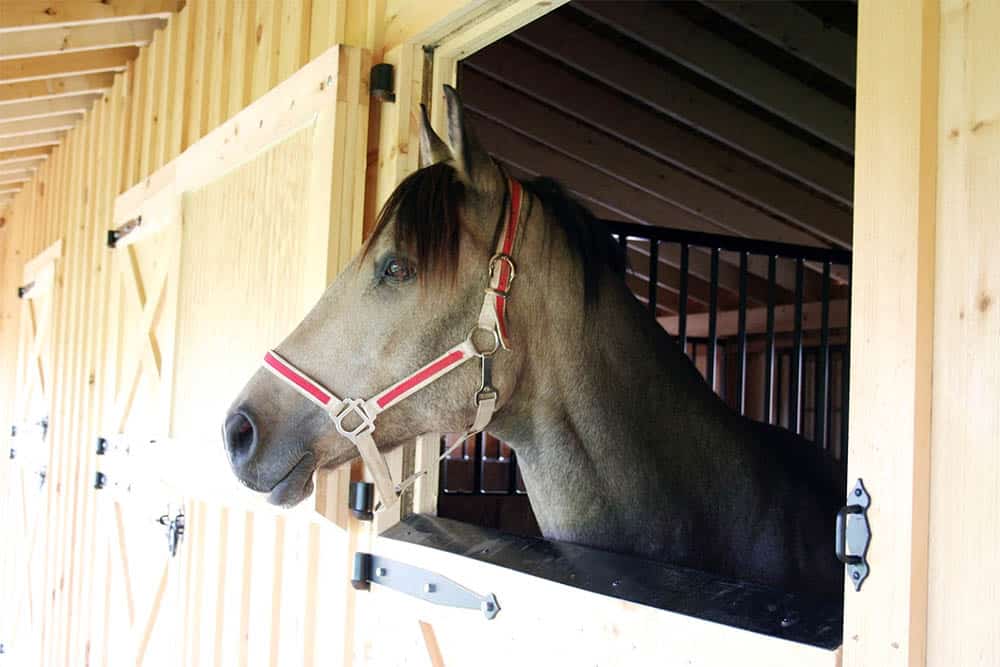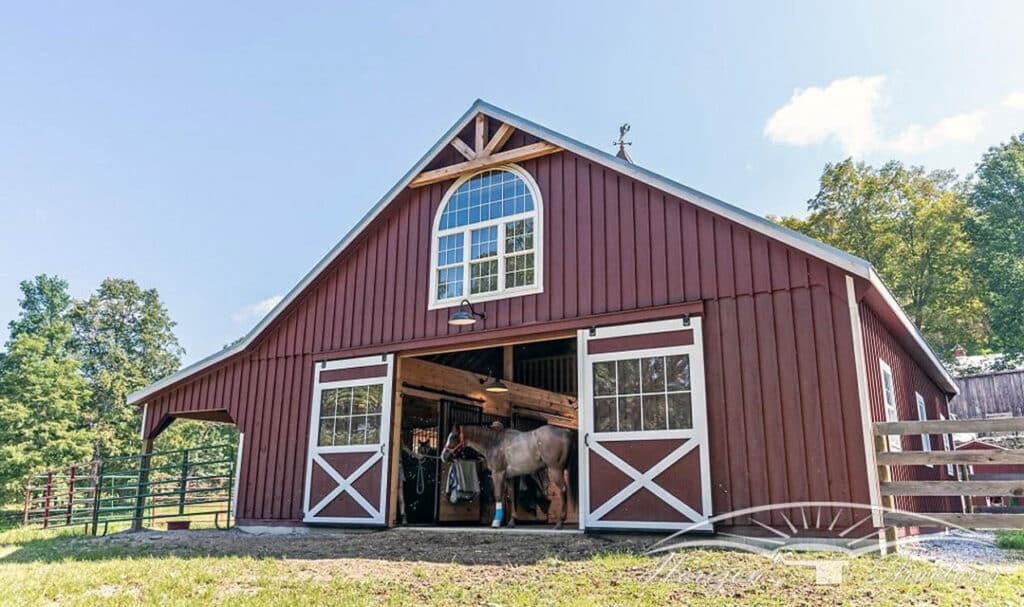Horse farm management is a time-consuming and labor-intensive business. There is as they say, “Always something needs doing on a farm,” and that is certainly true. The horse aficionado that loves caring and working with horses often finds it hard to actually find time to ride. Not too surprising when you consider all the farm maintenance chores that go alongside the feeding, mucking, grooming and tack care that makes up a horsey lifestyle.
In order to find that all important,‘time to ride,’ it is smart to consider as many labor-saving methods in horse management protocols as possible.
Here are some tried and tested methods to get you started on the right track.
The Feeding Regime
The majority of Equus are large critters and with that comes a high quantity of consumption of both water and food. Wherever and whenever it is possible to facilitate the animals an opportunity to forage and feed themselves much time and likely money will be saved.
Forage, usually fed in the form of dry hay, is a great example of where time and money can be saved on the horse farm. The use of an equine hay feeder (don’t use one designed for cattle because these types can cause injury to horses), is a boon for the horse caregiver. Equine hay feeders can be purchased that work with both the small, user-friendly small square hay bales and the larger round and square bales. The larger hay bale types are offered in different sizes, so fit the hay to the correct feeder size for optimal safe use and minimal hay wastage.
The University of Minnesota conducted a study that showed up to a 30% reduction in hay feed costs when an equine hay feeder of any type was used versus throwing hay over the fence or simply rolling out a carpet of round bale hay across a field or parking a large bale in the middle of the pasture. When an equine feeder is used it saves money on the increasingly expensive hay supplies and is much healthier for the horse to have to work a bit harder to obtain his hay as it slows down his rate of ingestion. Additionally, the equine feeder saves time, as it will not need to be refilled on a daily basis and certainly not multiple times a day. A real labor saver overall.
Provision of some form of motorized equipment will likely be needed to move large bales, but this method of machine mobility also saves time and effort and the machine, tractor or skidsteer, can be utilized to save time on many other horse farm chores.
Keeping horses at pasture more of the time, rather than stabled, is an obvious labor and cost saving method for equine caregiving. Not only does this save on bedding and mucking out chores, it also allows the horse to forage for his own food on his own schedule. As horses love to have the freedom to roam, it also helps prevent many other issues from occurring that ultimately will also cost time and money to solve. Mental issues such as bad behavior that stems from boredom or physical health issues such as arthritis that are inflamed quite literally by standing still, may be avoided by keeping horses in a horse-friendly environment. This results in less vet bills, less need to spend time and money administering medical remedies and less training time to handle rambunctious horses on the longe line to try and make them save to ride.
Manure management of all pastures is essential. Rather than picking the manure up as a daily task with a pitchfork and wheelbarrow, you can opt for a manure vacuum to do the job. This can be attached to a tractor, ATV or UTV or even lawnmower. However, this type of equipment is expensive.
Time and cost savers include the use of a harrow, that can be used to break up manure patches in the field and scarify the soil. As worms found in manure require moisture in order to develop, it is a good idea to upset their life cycle program by harrowing fields in the heat of the summer. This is because it exposes their limited water supply that they have encapsulated in larval stages and denies them moisture on hatching which they need to survive.
Water that is offered in a water trough for horses kept at pasture, will need to be regularly cleaned and refilled, and in winter will require some form of heating element. Consider installation of a frost-free automatic water spigot in each paddock or pasture. These ‘water posts’ offer fresh water to the horse (horses may have to be trained to use them) and save time that would otherwise be needed to clean slimy green water troughs in summer or worry about incursion in the water source by vermin or other disease carrying factors like birds (West Nile Disease) and possums (EPM etc.).
Barn Designs That Save Time and Energy
The water source for the equine residents of the stall space in a barn can also be automatic watering systems. Relatively easy to install, automatic waterers save all that effort of scrubbing and refilling water buckets and lugging them back and forth from frost free faucet to the stable. No more lifting, no more wet jeans from spilled water, and no more horse poop in the water buckets to clean up.
In the design of the structure of a horse barn, incorporation of exterior Dutch doors to each stall space that leads to a paddock or community area/pasture outside allows the horse owner to decide when and where the horse will be at all times of day. Sometimes the horse may be allowed the freedom to choose, while other times it will be labor saving to simply shut them out the barn door. This saves much time mucking out and also bedding costs. There are always those horses that will otherwise return to their stall space all day long just to pee and poop.
When a horse is in his stall and you are mucking out, the constant need to supervise his possible planned exit via the stall door, stop him playing with the wheelbarrow or skip and the risk of inadvertently poking his inquisitive self in the eye with the end of a pitchfork are all removed. This saves a lot of time and makes stall mucking safer for the horse caregiver. This is especially true for our younger helpers at the barn, who have much enthusiasm about completing the task and helping out but sometimes are bullied by the resident horse or overlook the exit strategy the intelligent horse has mapped out.
The addition of an overhang to the barn design offers shade and respite from the heat of the sun for the horse that is shut out of the barn. It is a relatively cheap option to add to a barn build and well worth the money.
Less Mow – Let the Grass Grow
When you map out your horse pastures, it does look grand to have great swaths of lawn leading up to the property and around the grounds. But the reality is this grass will need your care and attention. The price of gasoline and the quantity needed to run a decent size mower makes keeping the grass cut and less tick-friendly an expensive enterprise and one that will of course require much time and effort.
Plan to minimize lawn grass areas and instead make them pasture or paddocks spaces where possible.
To save on endless weed whacking and weed control chores, consider inviting a neighborhood goat owner to graze their goat herd or buy a goat or two to do the job. A mobile electric fence system can easily be utilized to keep and move the goats where they are needed.
Tack and Equipment
Consider shelving the leather bridles and martingales for daily trail riding or schooling times and keeping leather goods for show dates. The endurance industry in particular has long adopted the use of more user-friendly materials for tack and equipment such as synthetic products (or certain vegan leather) that can be simply wiped off with a damp sponge to clean it after use.
It is much more labor friendly to clean tack after every use rather than let the dirt and grime, sweat and detritus build up on it over time and then do a massive deep clean. Also, regular cleaning of tack is much better for the well-being and comfort of your horse.
Build YOUR Barn YOUR Way!
Call 888-447-4337 to Speak with a Barn Consultant or Design On-Line HERE
Storage Needs
Save the time and effort needed to cover equipment to protect it from sun, rain and snow by having easy access storage on hand. An open shed row barn set up is perfect for larger motorized equipment such as tractors, implements and tools. A run-in shed can provide storage for hay and bedding, or a spare stall can be utilized within the barn if necessary.
Keep supplies for cleaning stalls, riding equipment etc. all centrally located to save time running back and forth to fetch and return them.
Everything In Its Place
A final part to the labor-saving jigsaw puzzle is keeping everything in its place. Time spent searching for a particular bit or bridle, a snow shovel or a horse vacuum hose etc. is all wasted time. Organize your tack room, feed room, grooming space and farm tools in an orderly manner to ensure everyone can find anything required easily and in a logical place.
A tidy yard is also a safe yard for both horses and their human caregivers.


